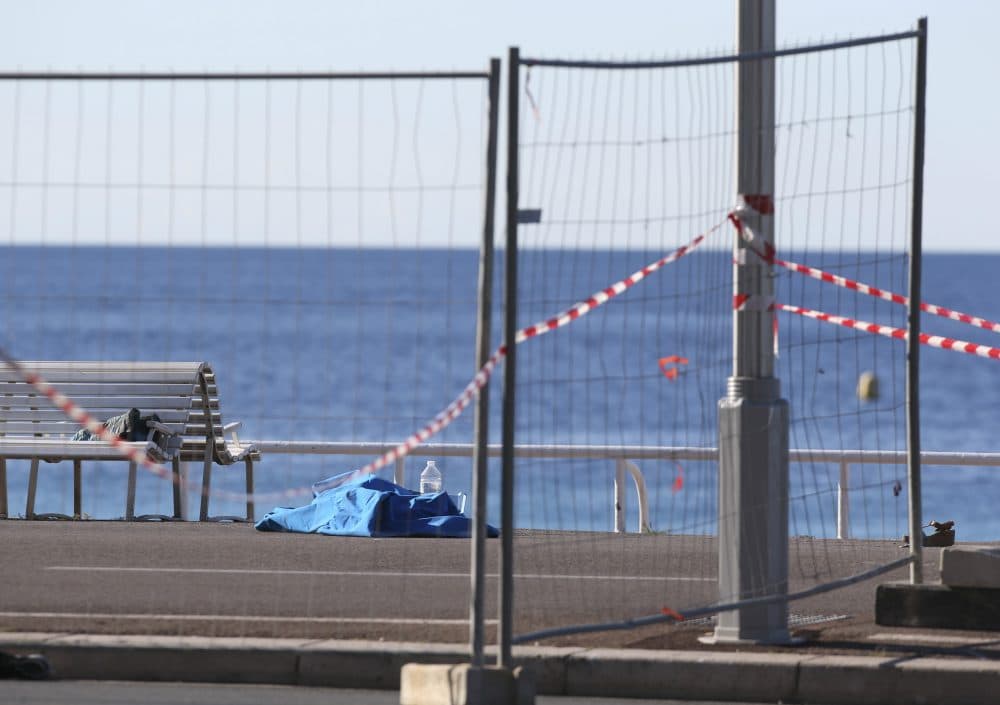Advertisement
The Case Against Naming Terror Suspects, Mass Shooters

Who isn’t sick of seeing videos of people falling under a torrent of gunshots, hearing people screaming from pain and crying from fear and anguish, looking at a scene of blood and rubble and wondering what it looked like before the bomb exploded? After Columbine, Boston, San Bernardino, Brussels, Charleston, Orlando, Istanbul, Baghdad, Dallas and Nice, a strange numbness over these attacks is starting to settle in. And that is unsettling.
Unsettling because the violence is becoming commonplace; all part of a hackneyed, murderous script. The shooter makes sure he gives his name to police or leaves his identification where it can be found. In one case, he checked Facebook to see if he was famous yet. Because it is so common, perhaps members of the press should not spread his name and picture around giving him the high profile he so desired.
Given the extensive research on what motivates violent extremists, it is clear that journalists unwittingly have become accessories to murder by the way we cover the events...
Keeping information away from the public goes against everything journalists are trained to do. The public should have access to details about every significant event in their community and the larger world so they can decide how best to lead their lives. However, in the case of terrorism, the promise of fame often spurs people to take lethal action, copying the actions of other killers so they can grab even bigger headlines. Too often, the press provides the inspiration for mass murder simply by delivering the news.
What would happen if journalists withheld the names and photographs of the killers, but reported everything else? Is it possible that the number of copycat shootings within the U.S. and the people attracted to joining terrorist groups might dwindle? Isn't it worth the experiment to see if more lives could be saved?
Domestic shooters and international terrorists are both motivated by the desire to achieve significance through violent domination. While their targets may be as different as black parishioners, school children, white cops or French revelers, and their causes as diverse as white power, black power or Muslim supremacy, their tactics and goals are similar. “Acts of violence and terrorism typically provide their perpetrators with substantial fame and recognition. Terrorist acts, especially those involving large-scale casualties, mark history and are covered voraciously in the media, transforming the perpetrators into martyrs and heroes in the eyes of potential supporters,” according to psychologists Michelle Dugas and Arie W. Kruglanski.
While studying the shootings at a Norway camp, criminologists concluded that “the perpetrator was influenced not only by political rhetoric, but also by the cultural script of school shootings. [He] was socially isolated and lived his life online. He targeted young people in educational contexts and tried to kill as many people as possible. Preparation was extensive, including cultural products distributed online, and notoriety was the primary objective.”
By withholding the identity of a violent extremist, reporters may be able to disrupt the murderer’s script without compromising our duty to inform the public...
Given the extensive research on what motivates violent extremists, it is clear that journalists unwittingly have become accessories to murder by the way we cover the events, fulfilling the dreams of the terrorist by helping him to live forever.
Every major organization has grappled with how to counter terrorism. The police and security forces have changed their procedures to try to prevent attacks. Emergency medical personnel have trained and retrained to prepare for a major assault in their city. State and national legislators have written and rewritten proposals for gun control.
News organizations, like any other, must grow and change with the times. It is time to create a new policy about reporting on terrorism that prohibits the publication or broadcast of the terrorist’s name and photograph. Granted, this proposal goes against all reportorial training and tradition, and there will be much division over it in the newsroom. Typically, the bad guys are always named, while some innocents, such as minors and rape victims are not. Some reporters may argue that publicizing the identity of a suspected terrorist helps police capture him. While this may be true, journalists don’t work for the police. By withholding the identity of a violent extremist, reporters may be able to disrupt the murderer’s script without compromising our duty to inform the public, which would be in everyone's best interest.
